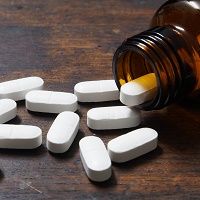Article
Pharma Changes Alter Opioid Dispensing & Overdose Rates
Author(s):
Research from Harvard Medical School and Boston University School of Medicine indicates that opioid dispensing and prescription opioid overdoses decreased substantially following two major changes in the pharmaceutical market in 2010: the introduction of abuse-deterrent, extended-release oxycodone hydrochloride and withdrawal of propoxyphene.

Research from Harvard Medical School and Boston University School of Medicine indicates that opioid dispensing and prescription opioid overdoses decreased substantially following two major changes in the pharmaceutical market in 2010: the introduction of abuse-deterrent, extended-release oxycodone hydrochloride (OxyContin; Purdue Pharma) and withdrawal of propoxyphene (Darvon, Darvon-N, Dolene) from the US market after it was shown to have high rates of overdose deaths and cardiac side effects.
The study results, published online in JAMA Internal Medicine on April 20, 2015, showed that two years after these opioid market changes, total opioid dispensing decreased by 19% from the expected rate. During that same period, the estimated overdose rate attributed to prescription opioids decreased by 20%. However, heroin overdose increased by 23% during this timeframe.
The opioid market changes followed a quadrupling of overdose deaths from prescription opioid abuse in the United States between 1999 and 2010, a time when sales of prescription opioids grew rapidly. Studies analyzing national data have shown that areas of the country with higher prescription opioid rates had higher opioid overdose rates. In Massachusetts, opioid-related overdose deaths have exceeded motor vehicle deaths in number each year since 2005 and are the leading cause of injury death.
“The number of people dying from opioid overdoses indicates the urgency with which we need to deal with this crisis, which is one of the leading public health issues of our time,” said lead author Marc Larochelle, MD, MPH, Assistant Professor of Medicine, Department of General Internal Medicine, Boston University School of Medicine and Fellow in General Medicine and Primary Care, Department of Population Medicine, Harvard Pilgrim Health Care Institute, Harvard Medical School.
To help address the issue, OxyContin was made available in a tablet that is more difficult to crush, break, or dissolve than the original formulation and which forms a viscous hydrogel that cannot be easily prepared for injection. The new properties make the drug difficult to inject or abuse via snorting, which previous was possible through manipulation that caused the drug to be released more rapidly, increasing the risk of serious adverse events.
Interestingly, OxyContin prescribing dropped by 39% in the 2 years after the abuse-deterrent formulation hit the market, with no evidence to suggest that people switched to alternative extended-release prescription pain drugs and without an increase in the cost of OxyContin for consumers.
“These results suggest that many people who were prescribed OxyContin before it was reformulated may have been diverting or misusing the drug,” said Larochelle. “Given the decreased supply of prescription opioids, those seeking out an opioid could be turning to heroin, which may partially explain the tremendous increase in heroin overdose deaths over the past few years both locally and nationally. Our results indicate the potential of pharmaceutical changes in helping combat the opioid epidemic, but we stress the need for complementary interventions targeting the identification and treatment of addiction to curb opioid abuse.”





